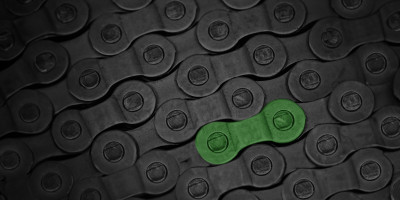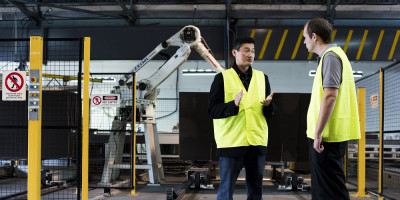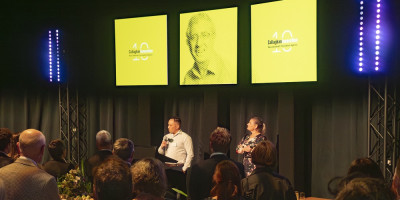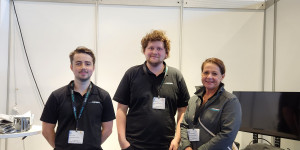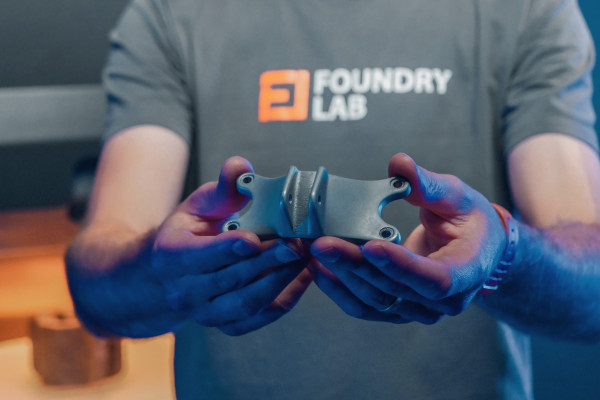Bluetooth, beacon technology, and real-time data analysis - it’s this digitisation that is helping New Zealand Steel get better oversight of its inventory. And all through Callaghan Innovation’s Digital Lean programme.
At a glance
- Fix issues with misplaced inventory and inventory tracking one product, and New Zealand Steel are set to save $220,000 a year.
- Through the Digital Lean pilot programme New Zealand Steel were able to integrate Bluetooth technology to digitally track their inventory with real-time visibility of orders.
- Cost-savings, decreased waste, and better profitability, New Zealand Steel are on track to achieve it all, even more so if the technology is applied upstream.
Digital Lean is a fabulous programme. I'm a big supporter.
It was a great investment to spend the time and money exploring innovative solutions.
- Jeremy Smith, Product Launch Manager, New Zealand Steel
The missing inventory conundrum
Thousands of tonnes of pre-painted COLORSTEEL® steel roll out the doors at New Zealand Steel’s South Auckland Glenbrook Steel Mill each year. It’s a well-known, widely-used roofing and cladding product in the construction industry, but essentially each bit starts its journey as massive coils of rolled-up steel.
Each weighing between one and four tonnes, it’s not something you’d think could get lost. But it does happen, explains Jeremy Smith, Product Launch Manager at New Zealand Steel, with a reliance on manual labelling, scanning and recording systems causing the inventory to be misplaced at times. Basically, there’s a lack of visibility of order status and traceability.
Given their high value, New Zealand Steel could save up to $220,000 a year if it could reduce the unaccounted inventory for this product alone, that figure moving to $500,000 if the same improvement could be applied to upstream business units.
Smart steel tracking through Digital Lean
It’s little wonder then New Zealand Steel set out to find and implement a more effective tracking system. And Callaghan Innovation’s Digital Lean pilot programme provided them with that opportunity.
Teaming up with consultants Beca also, New Zealand Steel looked into smart-tag technology that could be applied to each steel coil. Beca considered a range of technologies – wireless RFID tags, barcode scanning, image recognition cameras – but the best fit for the job turned out to be Bluetooth.
Bluetooth beacons placed in warehouse distribution zones were able to detect a low-energy Bluetooth tag attached to each coil, at a range of up to 60 metres, with 100 per cent accuracy. And with data in hand, the next step for New Zealand Steel was to find a way to make sense of it all.
With legacy and new enterprise systems in play, they were staring down the barrel of months of development work to allow the Bluetooth tag data to be integrated. Instead, Beca paired the company with Auckland-based Bluetooth tracking and integration specialists, OnSight, which used its cloud-based software platform to make sense of the raw beacon data in real-time.
“It was hugely beneficial to be able to transform the raw data into a visual tool which could be easily understood and communicated throughout the business,” says Smith.
Real-time inventory tracking with very real results
The Digital Lean implementation showed that New Zealand Steel could effectively automate data gathering and analysis at its warehousing and national network of distribution centres.
“Now we can get a big picture view of all the inventory in the warehouse, wirelessly, without manual scanning or recording,” says Smith. “When the coils leave the warehouse or distribution centre zones we can see that they've started their journey to the customer.”
And whilst making the technology a mainstay of the business’ operations will require considerable work, Smith says through Callaghan Innovation’s support New Zealand Steel has the impetus to tackle this key area of inefficiency in its processes. All up it means reduced waste, increased customer satisfaction, and better profitability.
“The way Callaghan Innovation ran it, providing in-kind support, mentorship and a bit of funding, was excellent,” says Smith. “Digital Lean is a fabulous programme. I'm a big supporter.”
As well, New Zealand Steel can look to scale up the technology into upstream business units and eventually also its customers, who could use the same underlying technology to improve their own supply-chain processes.
“There are a lot of people involved in steel’s journey to the customer from manufacturing to warehouse to building site, so if we can provide some leadership in improving the supply-chain process, then the industry will be better for it,” says Smith.



